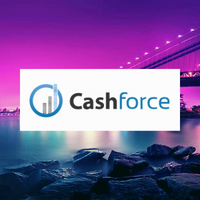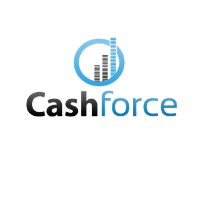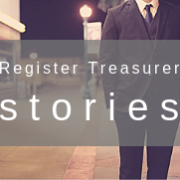Partner Interview | CEO Nicolas Christiaen about how and why they built Cashforce NextGen, the ‘next generation’
05-10-2021 | treasuryXL | Cashforce
Why did Cashforce create the ‘NextGen’? What’s the vision behind this great concept? We have asked CEO Nicolas Christiaen 10 questions regarding the creation of the NextGen platform.
Find out why Cashforce created NextGen, what makes it unique and what solution the platform offers to treasurers.
Introduction Nicolas
 Nicolas Christiaen is the CEO and Co-founder of Cashforce, an industry leading cash forecasting and working capital insights system. Nicolas has an extensive background in finance analytics, cash management and cash forecasting. He has led the effort to bring Cashforce to multi-national firms in distribution/retail, manufacturing and logistics/services industries. Nicolas uses his experience to drive both product development and thought leadership within Cashforce, resulting in a user base that benefits, not only from the system, but also the best practices that helped design it. Prior to Cashforce Nicolas worked as a management consultant at PwC and was a serial entrepreneur, founding two other software companies. He is frequently a guest speaker in the FinTech community and you will often find him on panels at international treasury conferences.
Nicolas Christiaen is the CEO and Co-founder of Cashforce, an industry leading cash forecasting and working capital insights system. Nicolas has an extensive background in finance analytics, cash management and cash forecasting. He has led the effort to bring Cashforce to multi-national firms in distribution/retail, manufacturing and logistics/services industries. Nicolas uses his experience to drive both product development and thought leadership within Cashforce, resulting in a user base that benefits, not only from the system, but also the best practices that helped design it. Prior to Cashforce Nicolas worked as a management consultant at PwC and was a serial entrepreneur, founding two other software companies. He is frequently a guest speaker in the FinTech community and you will often find him on panels at international treasury conferences.
Introduction NextGen
Cashforce is a “next generation” cash forecasting and working capital analytics solution focused on automation and integration. By using Cashforce’s cloud-based Software-as-a-Service (SaaS) platform, corporates can unlock the potential for their data to help make smarter decisions, saving time and money in the process. Cashforce can consume a large variety of data, process that data using machine learning and get insights into cash flows and working capital. Cashforce NextGen eliminates the manual and cumbersome treasury tasks around cash forecasting, enabling its users to take advantage of AI-powered scenarios and a strong workflow for distributed treasury teams. The Cashforce system serves mid-to-large-sized corporates and is currently being used at over 70 companies and as many countries.
INTERVIEW
1. Can you remember your “A-ha!” moment that made you realize Cashforce NextGen needed to be built?
Yes, I can remember it well. We were working on a proof-of-concept exercise with a huge dataset, imagining ways to manage this large amount of complex data. We have always tried to challenge ourselves to look for ways to do things better. Our technical team of UX and system performance specialists began laying out the case to use the latest technology to provide, not only the functionality, but also the scalability and performance we would need to meet projected commitments and fulfill the product vision. The team did a fantastic job and really showed me the “art of the possible”. That did it for me and we immediately switched gears to figure out how we could make this happen.
2. What critical issue does the Cashforce NextGen immediately resolve for the treasurer?
Right now, treasurers struggle to provide their stakeholders with accurate forecasts. This is due to the difficulty of consolidating data into one place, and dealing with complexities like intercompany payments, various payment behaviors and overdues. Treasury practitioners want to be able to drill into the data and to use the output to make important decisions from “how much excess cash do I have to invest for the short term?” to “how much cash will we have in three months when our planned acquisition closes”? It is hard to do that when your forecast is sub-par. Cashforce helps you pull data from every location where it resides so you can start with a complete picture. Then we layer our analytics on top of that, so that you have a clear picture of what is coming in and going out. The result is that the forecasted cash positions become meaningful enough that you can incorporate them into strategic plans.
3. How does the new platform differentiate from the other players in the market?
Cashforce began its journey from a working capital analysis point-of-view and we built our cash forecasting capabilities on top of that by linking to ERP systems. This had the effect of enriching the quality of the forecasts that we could generate and made them more useful. The ERP connectors themselves are a large differentiator: they ensure a seamless flow of granular, system-based data. This creates a fully transparent view into cash. On top of that, Cashforce applies smart forecasting logic (including AI-based algorithms, P&L-to-Cash logic, payment behavior analysis…) to build highly accurate and automated forecasts for the short, mid & long term. An intelligent simulation engine allows the Treasury department to evaluate different scenarios, analyze their impact and calculate the forecast/actuals variance.
4. Can each ERP system work with the Cashforce NextGen also when you work with multiple ERP’s located in different countries?
Yes, we have many clients that use Cashforce to pull in data from multiple ERP’s. Sometimes it is different instances of the same ERP, and sometimes it is a different ERP altogether. Either way, we configure Cashforce to pull in the needed data automatically, so that the end-users can start using the system with the data already loaded.
5. What is the biggest challenge you experienced while creating this new platform?
When you are trying to build a really remarkable product, there is always a tension between the ideal vision, the dream state, and what development can realistically deliver to meet market and client expectations and keep our overall momentum. On top of that, the pandemic struck while we were in the middle of our efforts, and this put an enormous strain on our timelines, productivity and ability to collaborate in real-time in the way you need to make something special. Doing that through web meetings can slow things down quite a bit, but luckily we already had a solid plan, an established process and an effective line of communication. This enabled us to keep going and now that we are moving back to normal, we are positioned to get out there and show what NextGen can do.
6. What is, in your perception, the biggest benefit of working with Cashforce NextGen?
As we brought Cashforce NextGen to market, we found that several benefits jumped out to our clients: Time-savings, Money-savings and the ability to use knowledge of your current and future cash positions to elevate forecasting to a strategic level. Many of our clients need to actively manage cash to invest or borrow properly, as needed and to make acquisitions. But they are using old tools and forecasting modules that simply didn’t give them what they needed. With NextGen, we have the highest degree of automation, the best workflow, the latest AI and machine learning models to improve forecasting and it all sits in a great user interface that is so easy to use. Sorry to not say one benefit, but the truth is the benefits are many.
7. What is the overall feeling of your customers about NextGen?
Our customers are very excited about the new product, just as we are. Prior to development, we made sure to meet with our clients, share the vision and gather their feedback, especially pain points. It was a great feeling when we went back to them to show our first demonstration of NextGen, you could feel the excitement in the air.
8. Can you give us an outlook on the product developments and tell us a bit more about your vision?
Cashforce’s vision has always been to save time and money for finance and treasury departments. Over the years, we have accumulated expertise around different approaches to short- mid-and long-term forecasting, connectivity with different ERP’s and TMS’s, designing sustainable workflows and integrating technologies such as artificial intelligence and machine learning. We want to leverage this knowledge alongside future-facing technologies, such as APIs, to create a new platform that is state-of-the-art and capable of consuming billions of transactions in real-time. However, we don’t plan to stop at consolidation and analysis of the data. We are working with our clients to build out the system to take the “next action”in their treasury processes. By linking with trade execution platforms and Treasury Management Systems (TMS), Cashforce will be a decision-making engine that drives our customers’ workflows.
9. The world is always changing, how does Cashforce stay one step ahead of its competitors?
The treasury world is always changing and will always be changing. It’s up to us to change with it and keep up with shifting consumer needs. Companies that focus on the past tend to stay in the past. So you must know what technology is out there, what is possible, what is available, what works and what doesn’t. For example, AI and machine learning will become ubiquitous and woven into the fabric of finance and treasury. That is why we want to lead the charge to use new methods and new technology. The better informed our clients are, the better prepared they will be to handle these changes as they happen.
10. Looking back on your Cashforce career, what is ‘the thing’ you are most proud of?
I have had the opportunity to work with some very talented people at Cashforce. I am most proud of our ability to create an environment that empowers our people to be as successful as they can. To see these talented people bring Cashforce NextGen to life has been an amazing experience.













